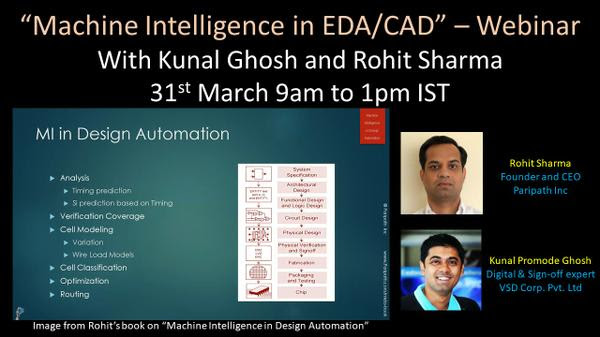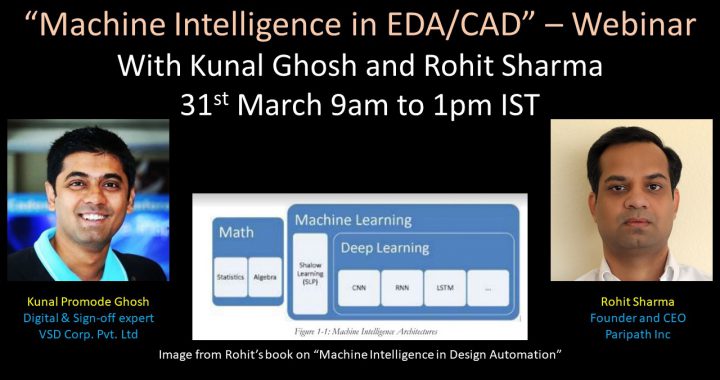
We start with Electronic design automation and what is machine learning. Then we will give overall introduction to categories of machine learning (supervised and unsupervised learning) and go about discussing that a little bit. Then we talk about the frameworks which are available today, like general purpose, big data processing and deep-learning, and which one is suitable for design automation. This is Machine Learning in general with a focus on CAD, EDA and VLSI flows.
Then we talk about Applied Theory (data sets, data analysis like data augmentation, exploratory data analysis, normalization, randomization), as to what are the terms and terminologies and what do we do with that, accuracy, how do we develop the algorithm, essentially the things that are required to develop the solution flow, let’s say, you as the company wants to add a feature in your product using machine learning, what you would be doing, and what your flow will look like and this is what is shown as pre-cursor of flight theory as what you should be looking out.
And then we start with regression, which is first in supervised learning. In the regression, we will give couple of example, like first is resistance estimation, second is polynomial regression which is capacitance estimation. For resistance estimation, we have the dataset from 20nm technology. And finally, we go on to create a linear classifier using logistic regression.
Next will be conditionality reduction, meaning, you have a large dataset and how to you reduce the size of that so that you can run on a laptop or even on your cell phone. Then there is a big example of that. Everything has mathematics behind that, this won’t be a part of the webinar.
[Follow-up webinar] Then we will move on to Deep Learning and finally we plan to have feed forward neural network, where we create couple of applications using neural networks. The first one is binary classification of cells, like you have library and we will design a neural network which can figure out a cell that’s give to it is combinational or sequential. And then, we make it broader and bring about 10 classes. So, there are 10 different type of cells (we can label them) and without giving any other information, can the neural network be designed to handle those 10 classes and can figure out which cell it is out of those 10 classes
Webinar presents a hands-on approach with session on GPUs, solving design automation problems with modern machine intelligence techniques by including step-by-step development of commercial grade applications including resistance estimation, capacitance estimation, cell classification and others using dataset extracted from designs at 20nm.
It walks the reader step by step in building solution flow for EDA problems with Python and Tensorflow.
Below is the link for the webinar.

